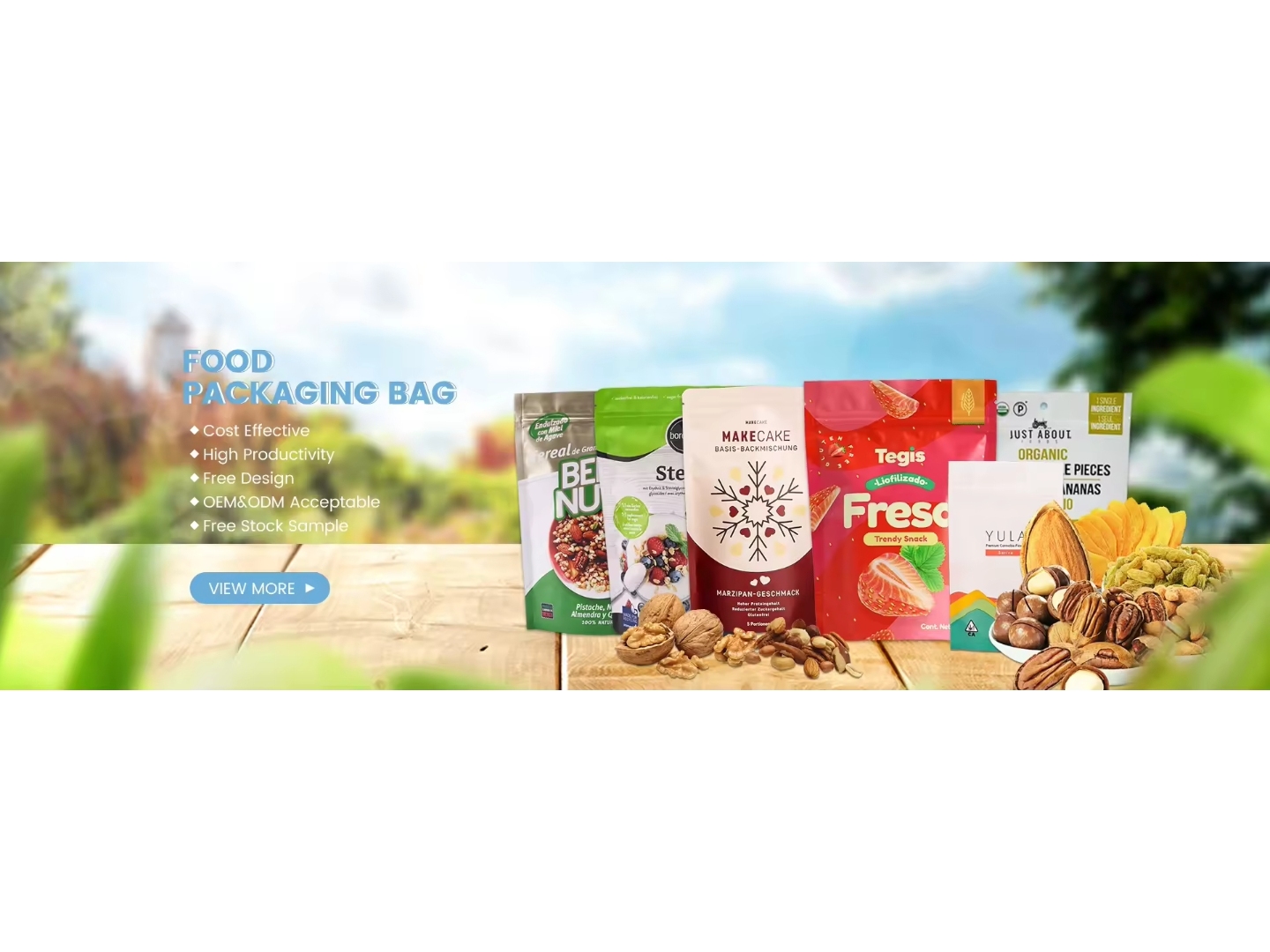Food packaging bag application landscape
1. Ensure food safety
The primary advantage of food grade packaging is to ensure the safety of food. Ordinary plastic bags or general packaging may contain chemicals that are harmful to the human body, which may migrate when they come into contact with food, thus affecting the quality and safety of food. The food-grade packaging bag uses food-grade materials, has undergone strict safety testing, and meets national food safety standards to ensure that it will not have any negative impact on food during use. Therefore, food-grade packaging bags are an important barrier to protect the health of consumers, which can effectively prevent the penetration of harmful substances and fundamentally ensure the safety of food.
2. Keep it fresh and flavorful
One of the main advantages of food-grade packaging is its ability to maintain the freshness and flavor of perishable foods. Whether it's fruit, vegetables or cooked food, proper packaging can extend the shelf life of a product, reduce waste and increase customer satisfaction. Barrier film and vacuum sealing technology create a closed environment to prevent oxygen and moisture from damaging the quality of the food.
Extend shelf life
Food grade packaging can not only maintain the freshness of the product, but also extend the shelf life of the product. By minimizing exposure to external factors that accelerate spoilage, such as light and air, packaging solutions such as air-conditioned packaging (MAP) and vacuum sealing can extend the shelf life of perishable goods. This not only benefits consumers by reducing food waste, but also increases the profitability of businesses by minimising product loss.
3. Environmental protection and recyclability
In today's focus on sustainable development, environmental protection issues have aroused widespread concern. Food grade packaging bags usually use materials that are degradable or recyclable, in line with the concept of green environmental protection. The use of food-grade packaging bags can effectively reduce the use of disposable plastics and reduce environmental pollution. At the same time, many manufacturers are also constantly developing new environmentally friendly materials, through innovative technology to improve the recyclability of packaging bags, so that it can reduce plastic pollution at the same time, still be able to ensure the safety and fresh food. This increase in environmental awareness is not only leading consumers to make healthier lifestyle choices, it is also driving the entire industry towards a more sustainable direction.
4. Diversified application scenarios
Food-grade packaging bags have a wide range of application scenarios and can meet the packaging needs of different foods. Whether it is liquid food, such as juice, soy sauce, or solid food, such as snacks, nuts, food grade packaging can provide the ideal packaging solution. In addition, food grade packaging bags are also suitable for food storage under freezing, microwave and other conditions, with good temperature resistance and tear resistance. Due to its diversity, food-grade packaging bags have become a favored choice for food producers, retailers and consumers alike. At the same time, different types of food-grade packaging bags can also use different sealing technologies and printing processes according to the characteristics of food to meet individual needs.
5. Easy to carry
Convenience is a key consideration for today's busy consumer. Food grade packaging is designed with convenience in mind, offering features such as resealable closures, portion control and microwave safe materials. Whether it's an on-the-go snack or a ready-to-eat meal, packaging that focuses on ease of use enhances the overall consumer experience. In addition, lightweight and durable packaging materials make the product easy to transport and meet the needs of modern lifestyles.

SUBSCRIBE
INQUIRY
